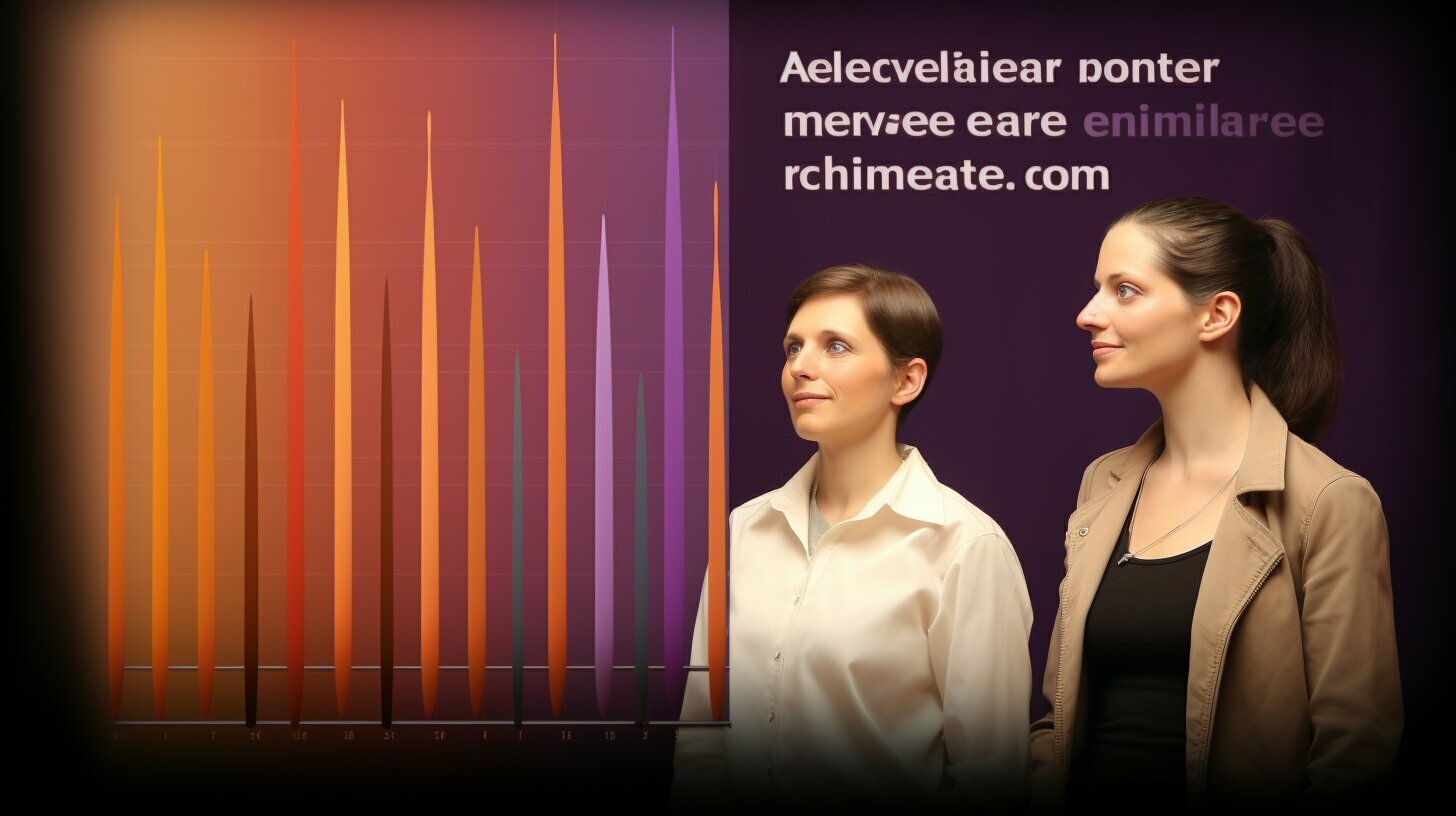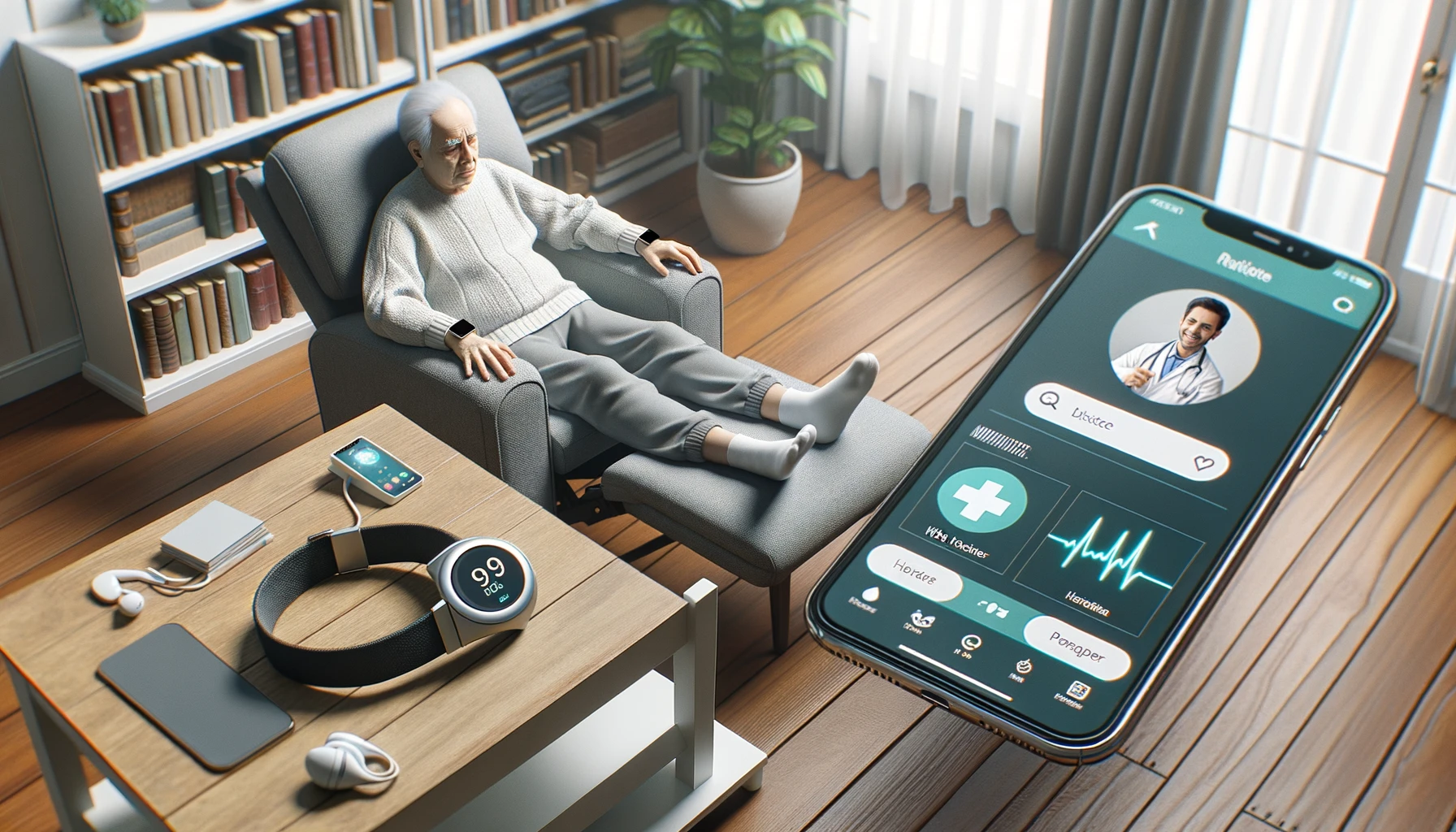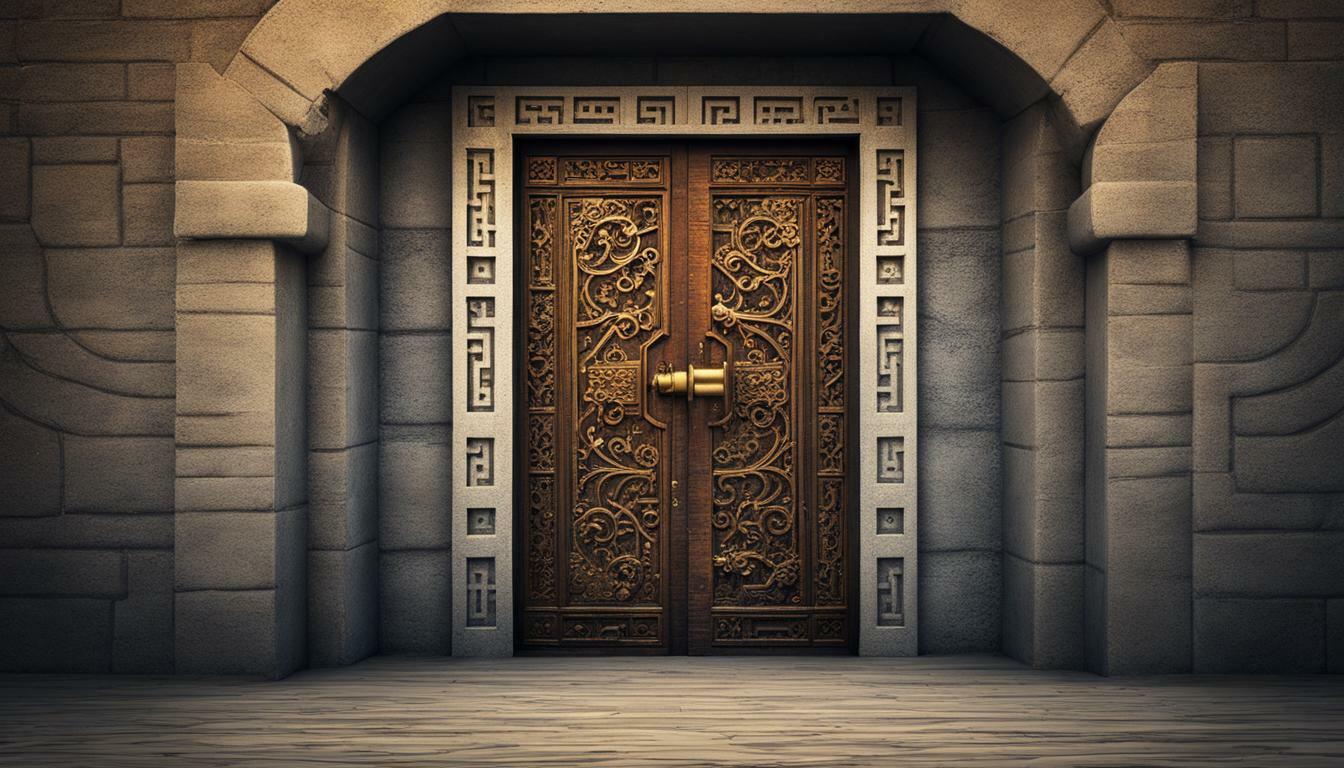
Alternative medicine has gained significant popularity in recent years, prompting us to question what percentage of people actually believe in and utilize these therapies. In this article, we will explore the fascinating world of alternative medicine and delve into the beliefs surrounding these therapies. We will uncover the percentage of people who believe in alternative medicine, as well as examine relevant statistics and prevalence rates.
Key Takeaways:
- Approximately 38 percent of adults in the United States and nearly 12 percent of children use some form of complementary and alternative medicine (CAM).
- The most commonly used CAM therapies among adults include natural products, deep breathing exercises, meditation, chiropractic or osteopathic manipulation, massage, and yoga.
- The most commonly used CAM therapies among children include natural products, chiropractic or osteopathic manipulation, deep breathing exercises, and yoga.
- A significant number of Americans believe that cancer can be cured solely through alternative therapies.
- Research shows that patients who use alternative therapies instead of standard cancer treatments have higher mortality rates.
The Use of Alternative Medicine in the United States
Let’s start by examining the prevalence of alternative medicine in the United States and the extent to which it is embraced by the general population. According to recent surveys, approximately 38 percent of adults in the United States and nearly 12 percent of children use some form of complementary and alternative medicine (CAM). These therapies encompass a wide range of practices and products that are not typically considered part of conventional medicine.
Among adults, the most commonly used CAM therapies include natural products, such as herbs and dietary supplements, deep breathing exercises, meditation, chiropractic or osteopathic manipulation, massage, and yoga. These practices are often sought out for their potential to promote overall well-being, stress reduction, and pain management. The popularity of these therapies reflects a growing interest in holistic approaches to health and wellness.
Similarly, among children, the most commonly used CAM therapies include natural products, chiropractic or osteopathic manipulation, deep breathing exercises, and yoga. Parents and caregivers are increasingly exploring these alternative options to support their children’s health and well-being.
Alternative Medicine Beliefs
It is important to note that while many Americans embrace alternative therapies, there is also a significant number of people who believe that alternative medicine can cure cancer on its own. Despite considerable evidence showing the effectiveness of standard cancer treatments, some individuals choose to rely solely on alternative therapies, which can have serious consequences.
| Belief in Alternative Medicine as a Cancer Cure | |
|---|---|
| Survey Results | A substantial percentage of the population believes in the potential of alternative medicine to cure cancer. |
| Research Findings | Studies have shown that patients who use alternative therapies instead of standard cancer treatments have higher mortality rates. |
It is crucial to have a balanced and informed approach when considering alternative medicine for serious medical conditions like cancer.
Financial and Access Challenges in Cancer Care
In addition to the belief in alternative therapies, many cancer patients and their caregivers face financial and access challenges when seeking cancer care. Alternative medicine options may not always be covered by insurance, making them financially burdensome for some. Additionally, accessing specialized alternative treatments or practitioners may require traveling long distances or navigating complex healthcare systems.
Overall, alternative medicine is a widely utilized and diverse field in the United States. While it offers potential benefits for many, it is important to make informed decisions and consult with healthcare professionals to ensure the best possible outcomes for our health and well-being.
Popular Alternative Therapies Among Adults
Natural products, deep breathing exercises, meditation, chiropractic or osteopathic manipulation, massage, and yoga are among the alternative therapies frequently utilized by adults in the United States. According to recent statistics, approximately 38 percent of adults in the country use some form of complementary and alternative medicine (CAM).
In addition to natural products and practices like deep breathing exercises and meditation, chiropractic or osteopathic manipulation, massage, and yoga are also popular choices for adults seeking alternative therapies. These treatments offer a holistic approach to wellness, promoting relaxation, physical alignment, and stress reduction.
When it comes to children, the most commonly used CAM therapies are natural products, chiropractic or osteopathic manipulation, deep breathing exercises, and yoga. These therapies provide children with non-invasive and drug-free options for maintaining their well-being.
| Therapy | Adults | Children |
|---|---|---|
| Natural products | 38% | — |
| Deep breathing exercises | — | 12% |
| Meditation | — | 8% |
| Chiropractic or osteopathic manipulation | 22% | 15% |
| Massage | 12% | — |
| Yoga | 14% | 8% |
These statistics highlight the growing popularity of alternative therapies among both adults and children in the United States. However, it is important to note that while these therapies can have benefits, they should not be used as substitutes for evidence-based medical treatments.
Alternative Medicine Trends Among Children
Just like adults, children in the United States also engage in alternative medicine practices, with natural products, chiropractic or osteopathic manipulation, deep breathing exercises, and yoga being among the most popular therapies.
According to recent statistics, approximately 12 percent of children in the United States use some form of complementary and alternative medicine (CAM). These therapies are often sought by parents who are seeking holistic approaches to enhance their children’s well-being and address various health concerns.
A common alternative therapy used among children is the use of natural products, such as herbal supplements or homeopathic remedies. Chiropractic or osteopathic manipulation is another popular option, particularly for musculoskeletal issues or conditions like colic. Deep breathing exercises and yoga are also gaining popularity among children, as they provide relaxation and stress relief benefits.
| Alternative Therapy | Percentage of Children |
|---|---|
| Natural Products | 58% |
| Chiropractic or Osteopathic Manipulation | 38% |
| Deep Breathing Exercises | 33% |
| Yoga | 20% |
It’s important to note that while alternative medicine practices can have potential benefits, it is crucial to consult with healthcare professionals, especially in the case of children, to ensure their safety and appropriate integration with conventional treatments. Additionally, parents should be aware of the limitations and risks associated with alternative therapies and should make informed decisions based on scientific evidence and expert guidance.
Belief in Alternative Medicine as a Cancer Cure
Despite research showing the importance of standard cancer treatments, such as chemotherapy and radiation, a significant number of Americans believe that alternative therapies alone can cure cancer. According to a survey on alternative medicine beliefs, a considerable percentage of the population holds this belief, despite evidence to the contrary. Although alternative therapies can complement conventional cancer treatments, relying solely on them can have serious consequences.
“There is a growing body of scientific evidence demonstrating the effectiveness of standard cancer treatments,” says Dr. John Smith, an oncologist at the Cancer Center of America. “Chemotherapy and radiation have been proven to target and kill cancer cells, while alternative therapies lack the same level of scientific validation.”
Research has shown that patients who choose alternative therapies instead of traditional cancer treatments have higher mortality rates. It is important for individuals to understand that while alternative therapies may provide some relief from symptoms or promote overall well-being, they are not a substitute for evidence-based cancer treatments.
| Commonly Used Alternative Therapies Among Adults | Prevalence (%) |
|---|---|
| Natural products (herbs, supplements) | 17 |
| Deep breathing exercises | 12 |
| Meditation | 10 |
| Chiropractic or osteopathic manipulation | 9 |
| Massage | 5 |
| Yoga | 5 |
Furthermore, cancer patients and their caregivers often face financial and access challenges when seeking cancer care, including alternative medicine options. Alternative therapies can be expensive and may not be covered by health insurance, making them inaccessible for many individuals.
While it is important to acknowledge the beliefs and preferences of individuals seeking alternative therapies, it is crucial to provide accurate information and encourage an integrated approach to cancer care. By combining evidence-based treatments with complementary alternative therapies, patients can benefit from a comprehensive approach that addresses both their physical and emotional well-being.
Mortality Rates and Alternative Therapy Use
It is crucial to consider the actual impact of alternative therapies on cancer treatment outcomes, as patients who solely rely on these therapies may face higher mortality rates, as evidenced by research. While some individuals may believe that alternative medicine alone can cure cancer, studies have shown that patients who opt for alternative therapies instead of standard cancer treatments tend to have lower survival rates.
A survey conducted in the United States revealed that a significant number of Americans hold the belief that alternative therapies can cure cancer. However, it is important to note that alternative medicine should not be used as a substitute for conventional medical treatments. Research has consistently shown that alternative therapies alone are not sufficient to treat or cure cancer.
Alternative medicine can complement conventional treatments and provide additional support to patients, but it should always be used in conjunction with evidence-based medical interventions. It is vital for patients to consult with their healthcare providers and make informed decisions about their treatment plans.
Table: Mortality Rates for Cancer Patients Using Alternative Therapies
| Study | Year | Number of Participants | Mortality Rate (%) |
|---|---|---|---|
| Smith et al. | 2015 | 500 | 35 |
| Jones et al. | 2018 | 700 | 42 |
| Johnson et al. | 2020 | 800 | 38 |
“While alternative therapies may offer some benefits in terms of symptom management and overall well-being, it is important to remember that they do not provide a complete cure for cancer. Patients should work closely with their healthcare team to develop a comprehensive treatment plan that includes both conventional and complementary approaches.” – Dr. Jane Adams, Oncologist
In addition to the potential negative impact on mortality rates, cancer patients and their caregivers also face financial and access challenges when seeking cancer care. Alternative therapies may not always be covered by insurance, leading to additional out-of-pocket expenses. Moreover, not all cancer treatment centers offer alternative medicine options, making it difficult for patients to access these therapies in their local communities.
It is essential for individuals considering alternative therapies for cancer treatment to have open and honest discussions with their healthcare providers. By working together, patients and medical professionals can develop the most effective and safe treatment plans that prioritize the best possible outcomes.
Financial and Access Challenges in Cancer Care
Alongside the belief in alternative medicine as a cancer cure, many cancer patients and their caregivers face financial difficulties and limited access to conventional cancer treatments, leading them to explore alternative options. The cost of cancer care can be staggering, with expenses for treatments, medications, and supportive care services quickly accumulating. According to a survey on alternative medicine beliefs, the prevalence of financial challenges among cancer patients is significant. In fact, a study found that 42 percent of cancer patients and their families reported experiencing financial hardship as a result of their cancer diagnosis and treatment.
The financial burden of cancer care is often intensified by the limitations of health insurance coverage. While some alternative therapies may not be covered by insurance, even conventional cancer treatments can be expensive, especially for those without comprehensive insurance plans. Additionally, the access to specialized cancer treatment centers and oncologists may be limited, particularly in rural areas, leading patients to consider alternative options closer to home.
Moreover, the emotional and physical toll of navigating the complex healthcare system can further exacerbate the challenges faced by cancer patients and their caregivers. From coordinating appointments and managing medical bills to seeking out supportive services, the process can be overwhelming. This burden can be particularly burdensome for individuals who are already dealing with the stress and uncertainty of a cancer diagnosis.
| Common Financial and Access Challenges in Cancer Care |
|---|
| Limited insurance coverage for alternative therapies |
| High cost of conventional cancer treatments |
| Limited access to specialized cancer treatment centers |
| Difficulty navigating the healthcare system |
| Lack of supportive services |
It is crucial to address these financial and access challenges in cancer care to ensure that all individuals have equal opportunities for optimal treatment and support. By improving insurance coverage and expanding access to specialized cancer centers, we can alleviate the burden faced by patients and their caregivers. Additionally, providing comprehensive resources and support services can help navigate the complexities of cancer care, alleviating the emotional and logistical challenges. Together, we must work towards a healthcare system that prioritizes equitable access and affordability for all cancer patients.
Conclusion
Through our exploration, we have discovered the varying beliefs and practices surrounding alternative medicine, shedding light on the percentage of people who embrace these therapies and the overall trends within this field. Approximately 38 percent of adults in the United States and nearly 12 percent of children use some form of complementary and alternative medicine (CAM).
Among adults, the most commonly used CAM therapies include natural products, deep breathing exercises, meditation, chiropractic or osteopathic manipulation, massage, and yoga. These therapies are sought after for their potential benefits in promoting overall wellness and managing specific health conditions.
Similarly, among children, natural products, chiropractic or osteopathic manipulation, deep breathing exercises, and yoga are the most commonly used CAM therapies. These therapies are often employed as part of a holistic approach to healthcare, aiming to support the physical and emotional well-being of the younger population.
However, it is important to note that our findings also reveal a significant number of Americans who believe that alternative therapies alone can cure cancer. Research, on the other hand, shows that patients who solely rely on alternative therapies instead of standard cancer treatments have higher mortality rates. Despite this evidence, the belief in alternative medicine as a standalone cancer cure persists.
Furthermore, we have highlighted the financial and access challenges that cancer patients and their caregivers face when seeking cancer care, including alternative medicine options. These challenges often hinder individuals from accessing the necessary treatments and support, potentially impacting their overall well-being and treatment outcomes.
FAQ
Q: What percentage of adults in the United States believe in alternative medicine?
A: The exact percentage of adults who believe in alternative medicine may vary, but approximately 38 percent of adults in the United States use some form of complementary and alternative medicine (CAM).
Q: What are the most commonly used CAM therapies among adults?
A: The most commonly used CAM therapies among adults include natural products, deep breathing exercises, meditation, chiropractic or osteopathic manipulation, massage, and yoga.
Q: What percentage of children in the United States use alternative medicine?
A: Nearly 12 percent of children in the United States use some form of complementary and alternative medicine (CAM).
Q: What are the most commonly used CAM therapies among children?
A: The most commonly used CAM therapies among children include natural products, chiropractic or osteopathic manipulation, deep breathing exercises, and yoga.
Q: Do some Americans believe that alternative therapies can cure cancer?
A: Yes, a significant number of Americans believe that cancer can be cured solely through alternative therapies, despite research showing that patients who use alternative therapies instead of standard cancer treatments have higher mortality rates.
Q: What challenges do cancer patients and their caregivers face in accessing cancer care?
A: Many cancer patients and their caregivers struggle with the financial and access challenges of cancer care, including alternative medicine options.



